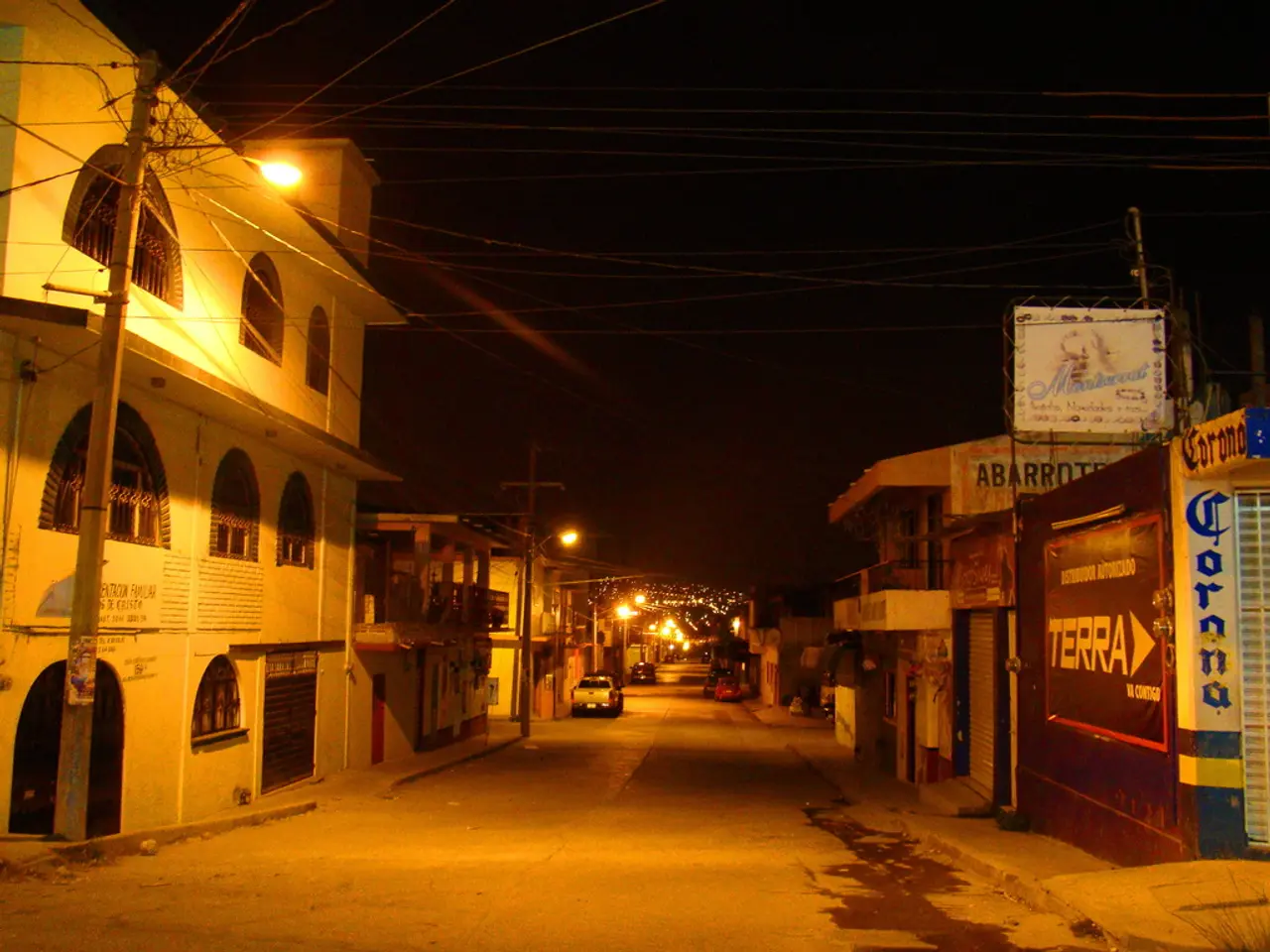Solar potential in Philippines' major urban areas remains largely untapped: Less than 1% of rooftop solar capacity is utilized in the country's largest cities
New AI Tool Maps Philippines' Rooftop Solar Potential
A new tool called SPECTRUM, developed by the Institute for Climate and Sustainable Cities (ICSC), is set to revolutionize the assessment of the Philippines' distributed solar capacity. Powered by artificial intelligence (AI), SPECTRUM uses machine learning and satellite imagery to map, monitor, and estimate rooftop solar photovoltaic (PV) potential and existing installations across the country [1][2][4].
The platform, known as the Solar Power Estimation of Capacities and Tracking Using Machine Learning, identifies high-impact solar zones and solar-ready rooftops, providing a more comprehensive understanding of solar potential beyond official registrations [1][2]. It also detects both registered and unregistered rooftop solar installations, addressing a major data gap that hinders accurate energy planning and policy-making [1][3][4].
As of the assessment, SPECTRUM has mapped over 1,800 MW of potential rooftop solar capacity nationwide, distributed as approximately 1,309 MW in Luzon, 472 MW in Visayas, and 61 MW in Mindanao [2]. However, despite this large rooftop solar potential, actual solar coverage in major cities remains below 1%, highlighting significant opportunities for growth [3].
SPECTRUM supports local governments, utilities, and solar developers in planning and implementing solar energy programs and contributes to promoting net metering and renewable energy transition policies [2][4]. By delivering precise geospatial data on solar capacity with reportedly high detection accuracy (around 87-90%), SPECTRUM enables better-targeted and people-centered energy policies that facilitate a just, resilient, and sustainable future for the Philippines’ energy system [1][3][4].
The Department of Energy (DOE) believes that the ongoing implementation of the SPECTRUM initiative will help identify potential projects and explore new business models. The Renewable Energy Market Review 2025 by insurance company Willis Towers Watson states that Southeast Asia must scale up renewable capacity by three to five times by 2035 to meet climate and energy targets [5]. With electricity demand from industry increasing by 6.6 per cent annually, rooftop solar offers a viable way to reduce dependence on the grid and lower consumer costs [6].
Asia has contributed 72 per cent of global renewable growth over the past decade, led by countries such as China, India, and Asean members. China, in particular, installed a record-breaking 60 GW of new solar PV in the first quarter of 2025 alone, with 60 per cent coming from rooftop systems [7]. Platforms like SPECTRUM are expected to play a central role in accelerating the Philippines' energy transition as falling solar costs and new market mechanisms reshape clean energy development.
The Philippines' government targets under the National Renewable Energy Programme (NREP 2020-2040) call for 35 per cent renewable energy in the power mix by 2030, and 50 per cent by 2040 [8]. Meeting this target will require over 52,800 MW of new capacity, more than half of which - 27,162 MW - is expected to come from solar [3]. The Expanded Rooftop Solar Programme (ERSP) in the Philippines aims to harness residential and commercial participation in the country's clean energy transition [3].
In essence, SPECTRUM functions as a critical tool to close the data gap on rooftop solar in the Philippines, providing policymakers and stakeholders with actionable, granular insights to accelerate distributed solar adoption and support the country’s clean energy transition. ICSC plans to continuously enhance SPECTRUM's performance by expanding coverage, improving AI precision, and tracking solar deployment over time.
References:
- ICSC. (2023). SPECTRUM Platform. Retrieved from https://icsc.ph/spectrum/
- ICSC. (2023). SPECTRUM Maps Over 1,800 MW of Rooftop Solar Potential in the Philippines. Retrieved from https://icsc.ph/spectrum-maps-over-1800-mw-of-rooftop-solar-potential-in-the-philippines/
- ICSC. (2023). SPECTRUM Identifies Large Rooftop Solar Potential, But Actual Coverage Remains Below 1%. Retrieved from https://icsc.ph/spectrum-identifies-large-rooftop-solar-potential-but-actual-coverage-remains-below-1/
- ICSC. (2023). SPECTRUM Supports Solar Energy Planning and Implementation in the Philippines. Retrieved from https://icsc.ph/spectrum-supports-solar-energy-planning-and-implementation-in-the-philippines/
- Willis Towers Watson. (2025). Renewable Energy Market Review 2025. Retrieved from https://www.willistowerswatson.com/en-GB/insights/2025/04/renewable-energy-market-review-2025
- ASEAN Centre for Energy. (2025). Rooftop Solar: A Viable Solution to Increasing Energy Demand in Southeast Asia. Retrieved from https://www.aseanenergy.org/rooftop-solar-viable-solution-increasing-energy-demand-southeast-asia/
- China National Renewable Energy Centre. (2025). China Installs Record-Breaking 60 GW of New Solar PV in Q1 2025 Alone. Retrieved from https://www.cnrec.org.cn/en/news/china-installs-record-breaking-60-gw-of-new-solar-pv-in-q1-2025-alone/
- Department of Energy (Philippines). (2020). National Renewable Energy Programme (NREP) 2020-2040. Retrieved from https://www.doe.gov.ph/nrep-2020-2040
- To bolster the Philippines' renewable energy transition, the government aims to increase solar energy in the power mix, targeting 35% by 2030 and 50% by 2040, as per the National Renewable Energy Programme (NREP 2020-2040).
- The Expanded Rooftop Solar Programme (ERSP) in the Philippines seeks to engage residential and commercial sectors in the country's clean energy transition, expected to contribute a significant portion of the required 52,800 MW of new capacity, which is more than half of the targeted renewable energy capacity.
- With Asia leading global renewable growth over the past decade, platforms like SPECTRUM are crucial in accelerating the Philippines' energy transition, as the falling costs of solar and new market mechanisms reshape clean energy development.
- In line with the need for accurately targeted and people-centered energy policies, SPECTRUM delivers precise geospatial data on solar capacity with high detection accuracy, supporting local governments and utilities in planning and implementing solar energy programs.
- Finance and science play pivotal roles in the energy transition, as climate finance and environmental-science advancements enable more effective solar deployment, powering the transition to cleaner energy sources.
- The ongoing implementation of the SPECTRUM initiative in the Philippines, along with efforts to scale up renewable capacity across Southeast Asia, aligns with the United Nations' Sustainable Development Goals (SDG), particularly SDG 7: Affordable and Clean Energy.




